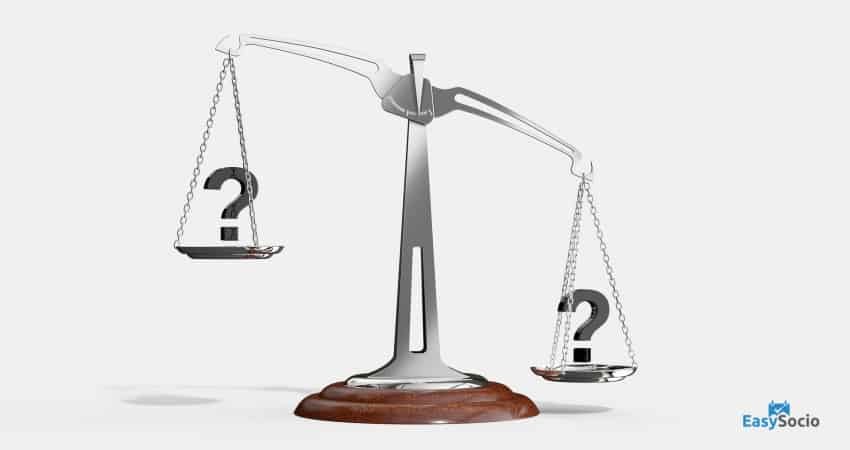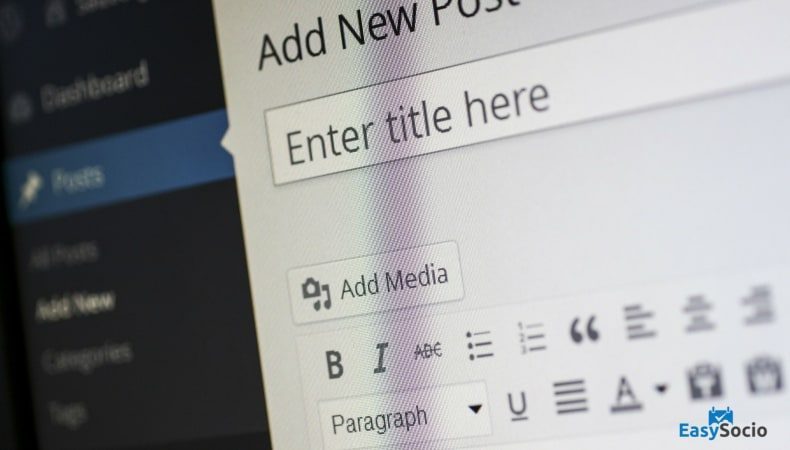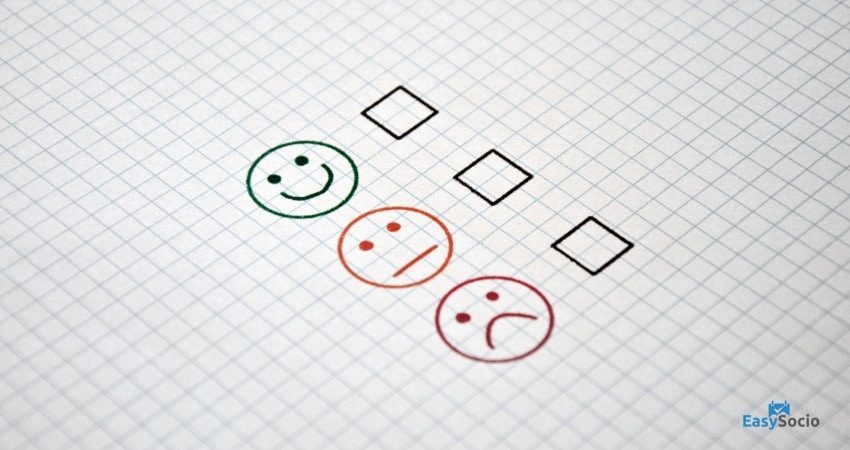What is WordPress?
WordPress is a content management system/publishing platform. It is used by more than 60 million + users.
Bloggers and other internet entrepreneurs can use its simplicity to create stunning blogs/website without the need for coding. It provides the easiest content management system (CMS) which allows you to create and manage your website with full features using just your web browser.
How does it work?
In the past, websites used to be created using a combination of coding languages such as HTML, Javascript, and CSS. However, this was simplified by the development of WordPress, giving non-coders the chance to create stunning blogs.
All you need to do to start your blog is install WordPress on your web-hosting server and start designing your website without the need for HTML knowledge. It is also possible to create a WordPress web page in very few seconds by using the hosted version of WordPress.
WordPress.com vs. WordPress.org
These are the two versions of WordPress software. Hosted WordPress and Self Hosted WordPress. Most people get confused by this part. The question we often see if what is the difference between these two and which one should I choose for my next blog?
A quick example will be – renting vs owning your house.
With a rented house, you have certain limitation and your are obliged to vacate your house if your landlord asks you to. Your landlord is in control irrespective of the rent you pay and you are bound by the rules.

- WordPress.com works in a similar way, you get space to start your blog for free.
- WordPress will display ads on your blogs.
- Your blog address is yourblogname.wordpress.com
- Pay to add your domain name to make it yourblogname.com
- If you violate WordPress terms, your blog will be taken down.
When using WordPress.com, you will build your blog which is hosted on WordPress manged servers with a limited set of features. On the other hand, when using WordPress.org, you need to have a hosting server where you can install WordPress and unlock the full potential of WordPress – hence this is called Self Hosted WordPress.
The hosted version which WordPress provides has a huge disadvantage. To have a domain name of your own, you need to buy their premium packages or you have to settle with a sub-domain name in its place using the Free plan. Well, the sub-domain name will still work, but it causes your website to be poorly ranked on Google (SEO).
A solution to this is buying your own domain and link it with your WordPress website.
Hence we always recommend going for the Self hosted WordPress. It costs less than you think and you can have a fast loading WordPress blog and a domain name for less than $63.
We will talk more about this later.

Why We Prefer WordPress
Our site (EasySocio) runs entirely on WordPress, and we love it. There are various reasons why we choose WordPress over other website creators such as Wix.
First, it is an open source content management system, the platform is free and there is a huge company and a gigantic user community supporting the project. Meaning – it is a well maintained system which you can download and use for free.
Secondly, it is the most SEO friendly publisher on the internet. Is this important? Absolutely yes! WordPress is coded using a very simple but high standard code that search engines favor when it comes to ranking.
Additionally, optimising a WordPress website is fairly easy, thanks to the tens of SEO plugins that you can install or use. This ensures that your web-page ranks higher on the search engines.
Finding WordPress support also is effortless. This comes in handy when you find it challenging to customise features in your website. It is very easy to find a person to help you or seek support from the official WordPress forum where you can find answers to all your questions. There are also tons of resources and talented developers who are ready to offer help.
Furthermore, WordPress gives you full control over your content compared to other platforms that limit what you can do on your site. For example, you can easily import or export data from WordPress that can hedge against losing your content if the service shuts down .
Is WordPress Easy To Learn?
WordPress is very easy to learn, and it is even possible to master the essentials of WordPress in just a day.
You can find WordPress training videos on their official website, or even on YouTube.
There are also many blogs and articles on the web that can guide you on how to tweak your way through WordPress.
Check the videos in the link below to learn how to use WordPress.

What You Need To Get Started
You need a free WordPress as provided, a domain name, a good quality hosting and a high-quality lightweight theme.
Here are the ingredients to start a self hosted WordPress blog:
- Latest WordPress software (most host companies offer one click install)
- A domain name (yourblogname.com)
- A hosting server to install WordPress
- A good theme (there are tons of free ones)
Over the years we have tested many hosting providers and in terms of value we recommended that you choose FastComet as your hosting provider. You also get a free domain name for the rest of your account’s life.
At Fastcomet, you will buy the first plan at around $63/year, they also offer excellent support services, and in case the user is in need of multiple sites, you can opt for a reasonably priced higher plan.
Fastcomet compares well with SiteGround and Bluehost, but it does not have renewal prices spikes as other, and it also offers high-quality services with exceptional tecnical support for less.
If you have the budget, consider SiteGround, they are expensive and the best in shared hosting business. For starters, am not sure if you should shed your money on SiteGround since FastComet will serve you just as well and help you start a performance blog with WordPress for less with no catches.
Next:
You need a good theme – this is the design – you can choose any from the free WordPress library.
Our best free picks include:
- OceanWP
- GeneratePress
- AstraWP
OceansWP which is a super simple fast loading theme which is free and it is also super-lightweight. Other preferred themes include WpAstra and GeneratePress which are also high-quality lightweight themes.
Getting started with WordPress
Here are the steps to follow
- Acquiring the best hosting for your website. You need a hosting service before you can use WordPress. It is advisable to use a hosting service that already supports WordPress hosting and has high-speed servers. In this case, the best to choose is FastComet.
- Secondly, you need to choose a domain name. This is the website address which is a section of a URL that helps to recognise web pages and IP addresses. The domain name should have a suffix like .org or .com and a name that describes your website. An example is the title of your website. If you look at our website it is easysocio.com
- Customise your site design. WordPress provides a default theme which you can customise or stick with it without customising. There are also several other themes that you can choose from when you want to change, or you can also choose a theme third part themes.
- Addition of plugins for extra features. Addition of extra plugins adds to what you can do with your website. You can install free plugins from the plugin directory or purchase and install premium plugins from third-party providers.
- Creation of key pages. Every site needs to have many pages such as a contact page and an about page unless you want it to be a one-page site. This is where you create or display your content.
- Exporting and importing content. You use the export tool to move information from an old WordPress website. The import tool is used for bringing content from another website.
Possible Cons of Using WordPress
Honestly, nothing in this world is perfect, and that includes WordPress too.
There are few downsides of using WordPress, such as security vulnerability where your site can be hacked, possible security vulnerability from third-party plugins, and the need for frequent updates.
Nonetheless, with good housekeeping and hosting service, these flaws can be effortlessly solved. Here is a quick checklist of things you need to do to keep your site safe.

WordPress Checklist
- Use strong passwords
- Never use ‘admin’ as your WordPress user name.
- Always use themes and plugins from genuine sources
- Never use nulled or pirated themes or plugins
- Keep WordPress updated
- Install a security plugin
- Maintain proper site backups
I hope this article helps you to understand WordPress and act as a guide to help you start your blog. Take all the info you want from it, go ahead and take action now to begin your online journey.
All the Best!

